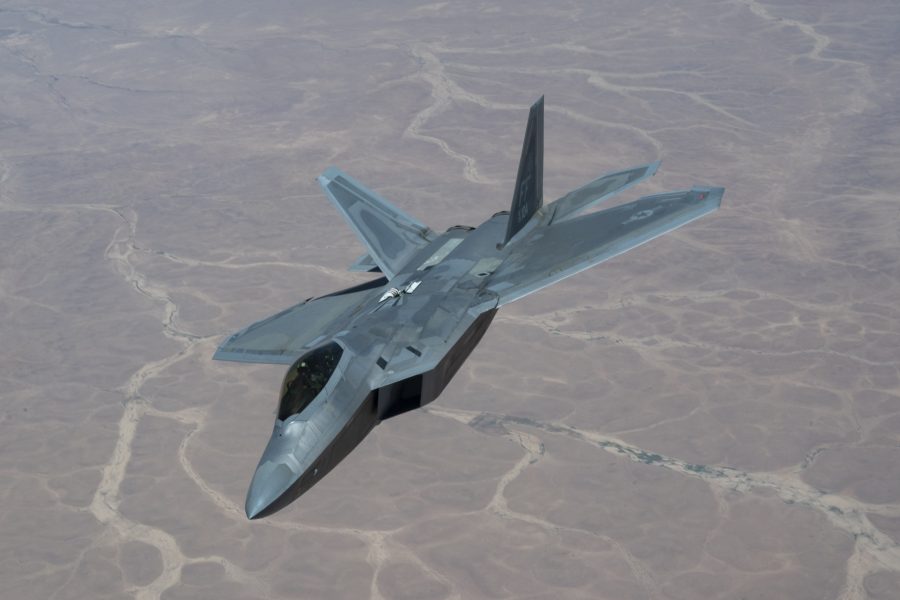Russia’s war in Ukraine is having far-reaching consequences for American forces in the Middle East, the top U.S. Air Force commander for the region said June 21.
Recent aggressive behavior by Russian pilots in Syria toward American aircraft may be part of an effort by Moscow to “compensate” for frustrations in Ukraine, Lt. Gen. Alexus G. Grynkewich, the commander of Air Forces Central, said in a conference call with reporters hosted by the State Department.
He added that Russia’s acquisition of drones from Iran may also embolden Iran as it continues to support militias in the Middle East.
“We certainly think of our interactions with the Russians in Syria in the context of the ongoing conflict in Ukraine,” Grynkewich said. “From my perspective, I see the Russian air force as being more aggressive in Syria, perhaps as a way to compensate for the fact that they have had to move capability and capacity out of Syria in order to support the war in Ukraine.”
The Russians, Grynkewich said, have violated the deconfliction protocols that were set up to reduce the risk of inadvertent conflict in Syria as recently as June 21, hours before he spoke. There was another breach the day before, he added. Those protocols, which were worked out by U.S. and Russian commanders, are intended to separate the two sides’ air forces in eastern Syria. Air Forces Central has noted that Russia has gotten as close to 500 feet from U.S. aircraft and regularly overflown U.S. troops. The U.S. is in Syria to assist its Kurdish allies in fighting the remnants of ISIS. Russia is supporting the regime of Bashar Al-Assad.
“This is a pattern of Russian activity,” Grynkewich said. “We have coalition forces on the ground at our garrisons that are focused on fighting ISIS. Yet the Russians will fly directly overhead or very near to these garrisons with air-to-ground munitions—with bombs on board.”
Since the spring, Grynkewich, U.S. Central Command officials, and the Pentagon have been raising the alarm over potentially dangerous interactions between armed American and Russian fighters. Last week, the U.S. sent F-22 Raptors to the region in a show of force.
“The biggest risk for all of us is these aircraft are not flying on training missions; they’re on combat missions,” Grynkewich said. “Our aircraft have live weapons on board; the Russian aircraft have live weapons on board. And this kind of behavior just really increases the risk of a miscalculation, some sort of an incident occurring that’s unintentional.”
Russia has been apologetic and apparently undeterred by U.S. actions, which included a recent training mission in which B-1 bombers fired long-range JASSM cruise missiles during a highly publicized transit of the region.
Grynkewich took note of a March episode in which a Russian Su-27 collided with a U.S. MQ-9 over the Black Sea. While two Su-27s were trying to harass the American drone, U.S. officials say they were likely not trying to make contact with the MQ-9, and the incident showed poor airmanship, whatever the goal. Nevertheless, the Russian pilots were decorated for their actions.
“Anytime you have an air force that has fallen so low on the professional ladder that they’re giving medals for buffoonery in the air, you’ve really got to wonder what they’re thinking,” Grynkewich said.
F-22s were sometimes used in the past to escort the U.S. strike missions on ISIS militants in northeast Syria as part of Operation Inherent Resolve because of the threat from Russian planes. Since then, ISIS’s self-declared caliphate has collapsed, and the U.S. has shifted its attention and resources to the Pacific and Europe. The U.S. still has around 900 troops in Syria and another 2,500 troops in neighboring Iraq supporting the anti-ISIS campaign.
The Russian harassment, Grynkewich said, is also hampering the fight against ISIS, a goal Russia ostensibly supports.
“They are down but not out,” he said. “ISIS continues to have the capability and a fair amount of freedom of action, primarily in areas where the Syrian regime and the Russians ought to be putting pressure on them. They are running training camps, and they’re building up their capabilities because the Russians and the regime are either incapable or unwilling to put pressure on ISIS. That then spills over into the parts of Syria where our partner forces operate or into Iraq or other neighboring countries.”
Grynkewich said he has other concerns about Russia’s posture in the region. Moscow has turned to Tehran to supply drones it has used to pummel Ukrainian infrastructure, and in turn, Tehran may receive fighter jets from Russia.
“Iran and Russia have a growing relationship,” Grynkewich said. “My sense is that Iran feels that Russia owes it something and that Russia is in some way now beholden to Iran.”
While much of the world’s focus has turned elsewhere, Air Forces Central is facing down Iran-backed groups and Russia in Syria and now the Arabian Gulf to protect vessels from being seized by Iran with a limited supply of fourth-generation fighters and A-10 attack aircraft. Meanwhile, the U.S. must remain focused on the core reason it is in Syria in the first place: fighting ISIS.
“Now, what does this do? Frankly, it distracts us.” Grynkewich said of Russian actions. “It’s a big distraction for us because we have to focus on defending our forces, and it’s, frankly, a distraction that the Russians ought to be concerned about because they are letting the ISIS threat grow right under their nose.”
